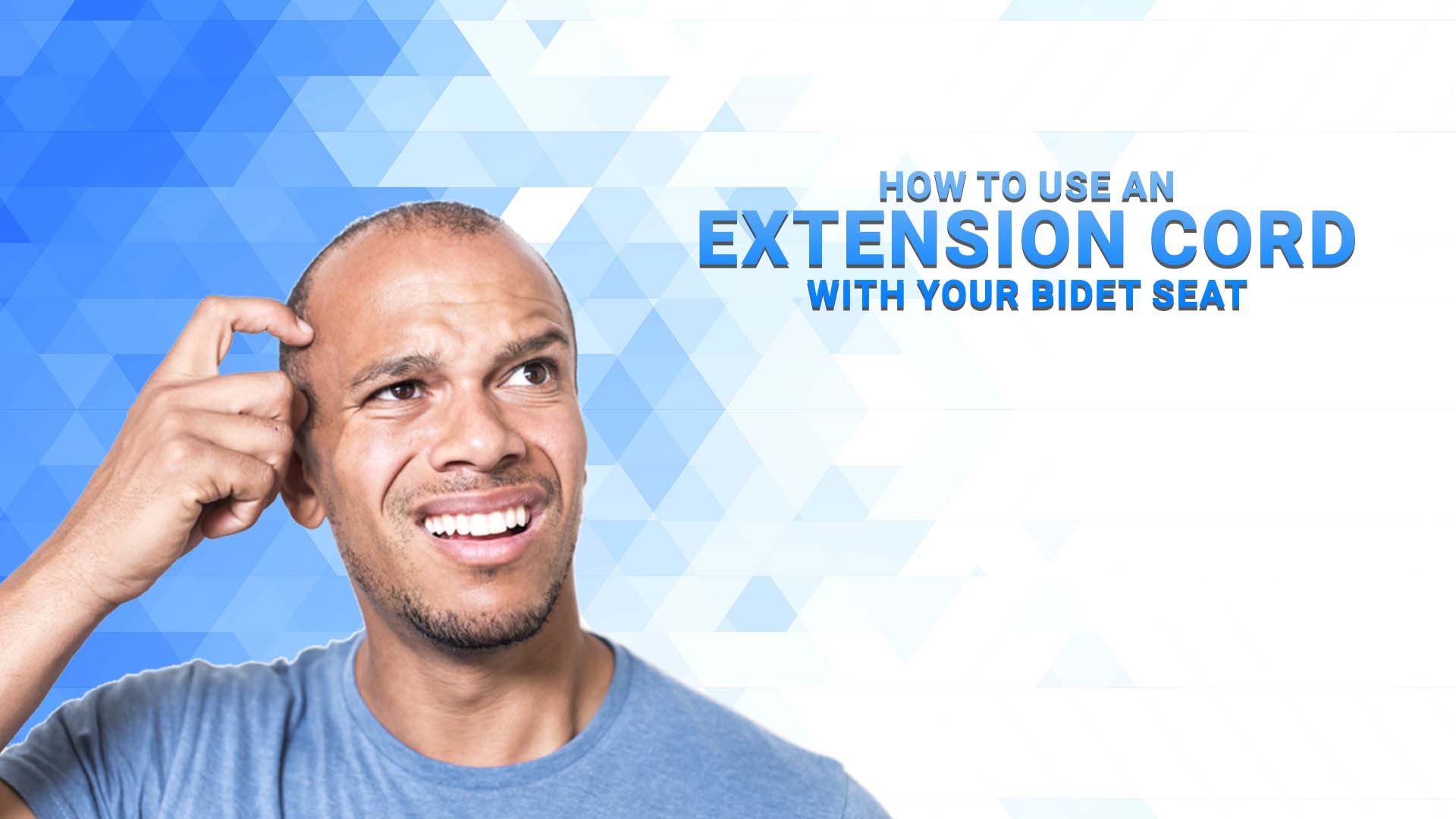Installing an electric bidet to your toilet can completely transform your bathroom experience. With many useful features, electric bidets are definitely a game changer. However, it is important to know that all electric bidets require an outlet to be plugged into. For some customers, having access to, or installing an outlet near their toilet, is their biggest hurdle when considering adding a bidet to their bathroom. Whether this is due to cost issues or simply not being able to have an outlet installed near their toilet, some customers will feel like they are out of luck. But this is not the case. Let’s break down how you can use a bidet without having access to a nearby outlet.
When purchasing a new bidet, it is important to note that most bidets have a 4 foot long electrical cord. Most bidets will have the cord coming from the right side of the seat (when facing the seat). For some customers, their electrical outlet is simply not within reach of this 4 foot cord and the cost of having an electrician install an outlet near the toilet is simply too high. A common scenario is having an electrical outlet that is across a bathroom vanity or sink, roughly 5-6 ft away from the toilet.
Not to worry. Using a standard, heavy duty extension cord can easily resolve this issue. Let’s discuss the proper way to use an extension cord with a bidet as well as different ways you can conceal said extension cord.
What Kind of Extension Cord Will You Need?
A 3 prong heavy duty extension cord that can handle 1500W / 13A will work great. Most bidet seats have a power draw of around 500W-1400W. A heavy duty cord from your local hardware store should handle this with no problems. For added safety. you’ll also want to be sure you are plugging into a GFCI outlet. These outlets are typically found in most US bathrooms and can be distinguished from regular outlets by their buttons (a reset button and a test button).
How to properly connect and route your extension cord.
When using an extension cord with your bidet, make sure the cord has plenty of length and is not strung tightly. Any excess cord can be wrapped up and hidden behind your toilet tank. You also do not want to create a potential tripping hazard. It is best if you route the extension cord in a way that eliminates or reduces any chance of tripping. You can do this by routing the cord behind the toilet and keeping the length of the cord low and hugging the wall.

Ways of routing an extension cord for a more pleasant look.
Some customers will be bothered by the look of an extension cord connected to their bidet. To get a more aesthetically pleasing look, you can route the extension cord in ways that reduce or altogether hide the extension cord. Let’s look at some examples:
One option you can take to hide your extension cord is routing them through cord channels.
A cord channel is a plastic container that essentially conceals and securely holds your extension cord. Most cord channels will have an adhesive backing so you can secure it to the wall or baseboard. They are usually paintable so they can blend into your wall decor.
We recommend running cord channels along the baseboards near the ground, or under your countertop if your counter has some overhang. A well thought out cord channel route can hide an extension cord going from your outlet to the bidet seat extremely well.
You can also run your extension cord through a vanity. This can be done by either routing the cord through the small gap between the counter and vanity or by drilling a small hole through the vanity itself and routing the cord through it.
Using an extension cord to connect a bidet is actually quite common among our customers and can be done relatively easily.









